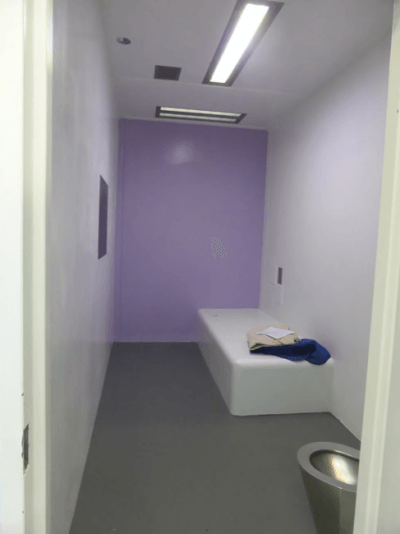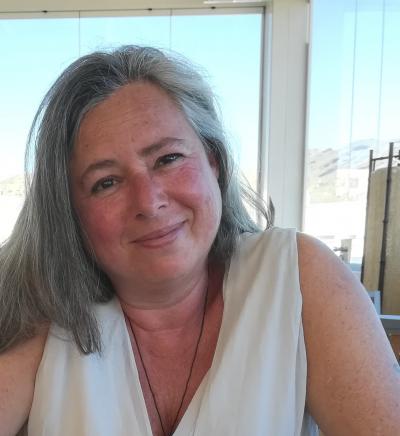‘There is no light at the end of my tunnel’: new report on solitary confinement and restraint practices in New Zealand reveals high and discriminatory use.
Solitary confinement and other forms of restraint are extreme practices, situated right at the boundary of what is permissible treatment of people and what is a violation of their human rights. It is therefore fitting that a report examining the use of such practices was published on Human Rights Day.
Posted:
Time to read:
The report, ‘Time for a Paradigm Change: A follow-up review of seclusion and restraint practices in New Zealand’’ published by the New Zealand Human Rights Commission, charts developments since the 2017 publication of Thinking Outside the Box? a review of seclusion and restraint practices in New Zealand, ‘and assesses the degree to which recommendations have been met. The report covers prisons, health and disability units, and residences for children and young people.
The central finding of the report is that solitary confinement and other forms of restraint still plague New Zealand's closed institutions, with too many people, including children and young people, being locked up alone in sparsely furnished rooms with little meaningful human contact for too long, in contravention of the UN Mandela Rules, the Bangkok Rules, the Convention of the Rights of the Child, the Convention on the Rights of Persons with Disabilities and other international human rights instruments.

Other findings include:
Overall
- Poor record keeping and data collection and analysis.
- Risk averse policies and practices; impoverished regimes; poor material conditions; lack of individual autonomy; variations in practice; insufficient staff training.
Children
- There has been a small reduction and more nuanced use of the ‘Secure Care’ unit in one Care and Protection residence (for children under the age of 14), but its use in one Youth Justice facility (for children up to 17 years old) more than doubled, including 22 stays lasting 8 days or longer in a Secure Room during a six-month period in 2019.
- The practice of isolating children should stop. Seclusion is harmful to the health and wellbeing of children and can further traumatise them and damage their development and healing.
Race and gender
- The use of seclusion remains disproportionality high with Māori and Pacific Peoples across the board. In women’s prisons, for example, Māori women made up 78% of all stays in the most restrictive form of segregation (‘management units’) in 2019.
- Women were segregated at a far higher rate than men, and Māori women were segregated at a higher rate than women of European descent, and for longer periods.
- Māori remain grossly over-represented in seclusion units. In the six months to March 2020, Māori made up 51% of the total number of people secluded in Health and Disability facilities.
- The discrepancy in the rate of segregation placements along gender and racial lines may indicate unconscious bias in decision making which needs to be investigated urgently.

- The data on the use of force and restraint provides a cause for concern across settings.
- In health and disability facilities, for example, over a period of 6 months restraints were used 358 times, with 114 of these uses involving prone restraints, including several very lengthy holds – 1463 minutes in one case, 290, 125 and 100 minutes in others.
- In prisons, there was a substantial increase in the use of restraint, mostly handcuffs, from 423 over a six-month period in 2016, to 1488 over 12 months in 2019. Pepper spray was used 118 times.
Responding to the report’s findings, New Zealand Chief Human Rights Commissioner, Paul Hunt, called on agencies to reduce, if not eliminate altogether, the use of seclusion and restraint.
“We know that the practices of seclusion and the use of restraints, particularly where they are used for prolonged periods, are inherently harmful. However, the remedial pathway is clear. Proactive, preventive alternatives, based on human rights and Te Tiriti and focused on de-escalation and trauma-informed practice, must be at the forefront.”
As well as the measures cited by Chief Commissioner Hunt, a meaningful change will require a significant shift in the way that detaining agencies think about the extreme tools of seclusion and restraint, and more work to understand some of the barriers to achieving such change.
In the meantime, detaining agencies need to investigate potential gender and racial bias in decision making regarding seclusion and restraint, distressed individuals should be provided with therapeutic environments rather than barren seclusion rooms, and more needs to be done to improve material conditions and access to fresh air, exercise, activities and meaningful human contact. Crucially, more needs to be done to ensure that even those held in solitary confinement can, unlike the prisoner quoted in the title, still see the light at the end of the tunnel.
Morning report: Interview 10.12.20

Sharon Shalev (LLM, Ph.D.) is a UK based human rights expert and criminologist. She is a Research Associate at the Centre for Criminology, University of Oxford; an Associate at the Mannheim Centre for Criminology, London School of Economics and Political Science( LSE); and an independent consultant at SolitaryConfinement.org. Over the past 20 years Sharon’s key research interest has been the use of solitary confinement in prisons and other places of detention across the world, and she has authored various publications on the subject, including the Sourcebook on Solitary Confinement, a practitioner’s guide to the health effects of solitary confinement and to human rights and professional standards relating to its use. Her award winning book, Supermax: controlling risk through solitary confinement (Willan, 2009) provided an early in-depth look into the rise, inner-workings and consequences of supermax prisons in the United States. More recent publications include Deep custody: Segregation Units and Close Supervision Centres in England and Wales (2015) and Thinking outside the box? A review of seclusion and restraint practices in New Zealand (2017).
Telephone: +44 (0) 7967 743535
www.SolitaryConfinement.org
@solitary_org
Share:
